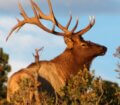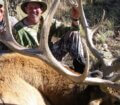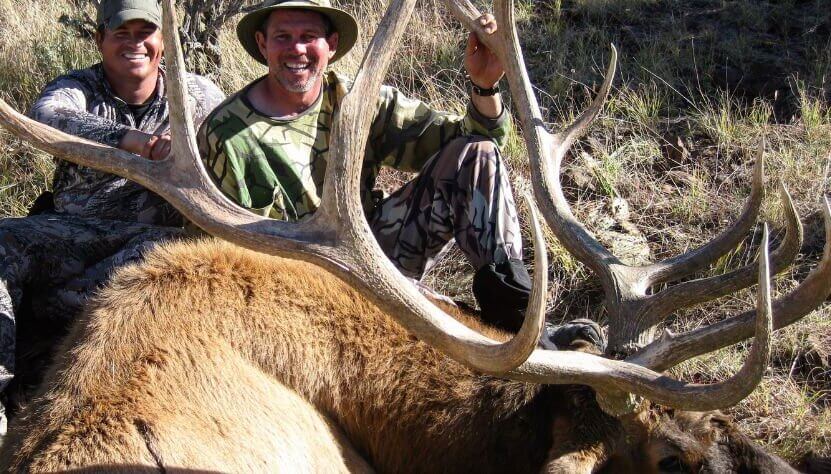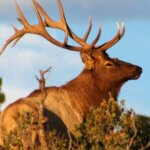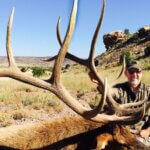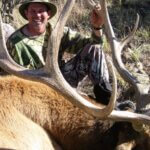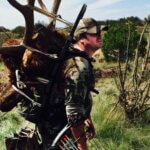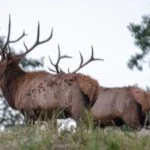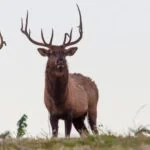Editor’s Note: Elk outfitter Tom McReynolds ([email protected]) (Phone: 602-705-4297) says, “I played baseball in college, and I needed a way to make some extra money. I had a friend older than me who was guiding for elk and mule deer. He asked me if I wanted to start guiding hunters when I wasn’t playing baseball for a part-time job while in college. During the fall, we weren’t practicing or playing baseball. Then, when I graduated from college, I started Black Mountain Outfitters. During this time, I guided in an area where I knew some of the owners of the land and started negotiating with them to lease the private property they owned for elk and mule deer.
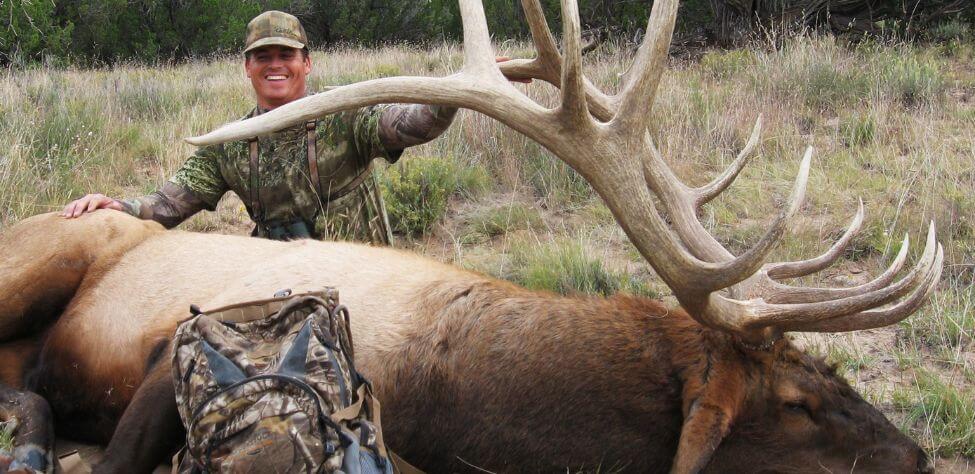
“My primary area at that time was west/central New Mexico because it was only 4.5 hours away from where I lived. There weren’t many outfitters in that area, but currently, we have over 1 million acres of private land that we can hunt, as well as quite a bit of public land. I have been guiding for over 20 years now, and Black Mountain Outfitters operates four different camps – our main camp is located in western New Mexico, South Dakota, Mexico, and Arizona. Although we primarily guide for elk, we also have many mule deer, longhorn, and whitetails in South Dakota and Coues deer in Mexico.”
John E. Phillips: What do you do if, for some reason, the bull’s coming straight for the hunter, both of whom are in thick cover, and the bull gets past the hunter without the chance for the hunter to get a shot?
Tom McReynolds: If the bull hasn’t smelled the hunter or me, I’ll often loop back to the hunter and try to call the bull back to him if the terrain will allow me to move without being seen. Otherwise, after the bull has already passed my hunter, I’ll attempt to return to my hunter, reposition him, and call the bull again.
Phillips: Let’s say you’ve found a big bull coming close to you and the hunter, but something has spooked him. He turns away from you and the hunter. Do you continue to try and take the same bull, or do you go and try to find another bull to hunt?
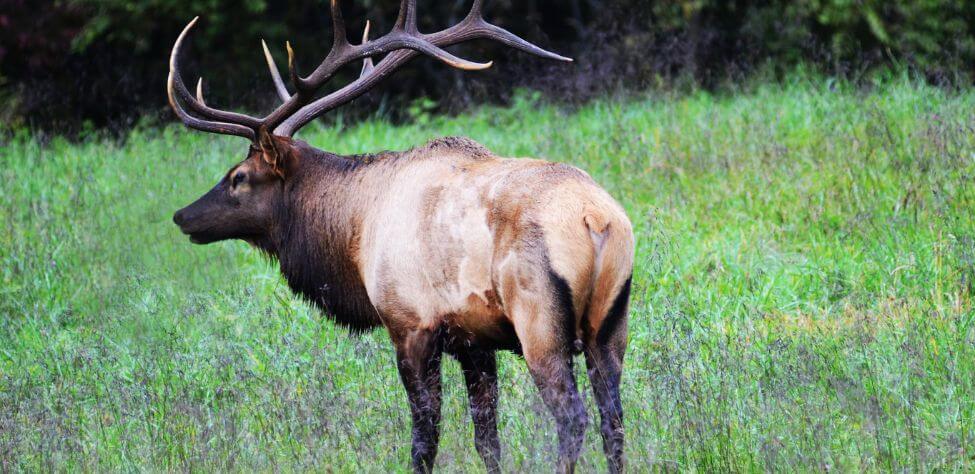
McReynolds: If the bull’s still bugling after being spooked, my hunter and I may try to circle the bull and call him from a different direction. However, if the bull becomes silent for 15-20 minutes, more than likely, we’ll hunt another bull. If we don’t locate another bull to hunt, we may wait until late afternoon and try to find him again to work the process. If I feel that the bull has winded us or that he may have thought it was a hunter calling to him and not a cow, I may change calls when I try to bring him in next time.
Phillips: If you’re calling to the bull and suddenly cows or satellite bulls are coming in, how do you get the herd bull to come into where you are?
McReynolds: This situation usually happens later in the rut. That’s why I like to hunt the early rut. You’re not as likely to have so many elk around you, causing your hunter not to be able to get the shot. While the peak of the rut is an exciting time to hunt elk, I’ve learned over the years that the best chance to get my hunter a trophy bull is at the beginning of the rut, before the big bulls have all the cows and satellite bulls with them.
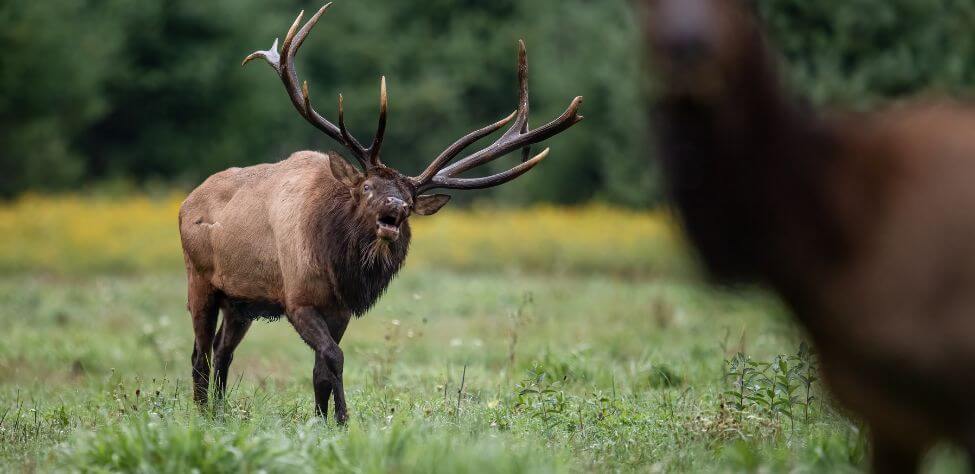
One of my favorite places to hunt the peak of the rut is around water holes. Usually, the bulls will be more active during the peak of the rut, and we’ll have some drier weather conditions. Then, the bulls will have to go to water holes much more often than in the early or late season. Usually, a herd bull, during the peak of the rut, will have his cows and maybe some calves with him. You can almost guarantee that the bull will be with cows during the peak of the rut – generally with calves, too. If a herd bull, cows, and calves are together, you’ll often start seeing the satellite bulls – those younger and smaller than the herd bulls. To be honest, most elk hunters will take the satellite bulls because they’re more reliable to find and hunt than taking a herd bull at that time of the year.
A veteran hunter who’s already taken several elk won’t shoot a satellite bull if he’s seen the herd bull and knows it may be the biggest bull elk he’ll have an opportunity to take. If a satellite bull does come in, you spook him, and he blows out of your location, the best thing to do is to give numbers of cow calls. Then, the satellite bull will calm down and not get so nervous that he spooks the herd bull and the rest of the cows.
Expert Guidebooks on Elk Hunting: Best Sellers
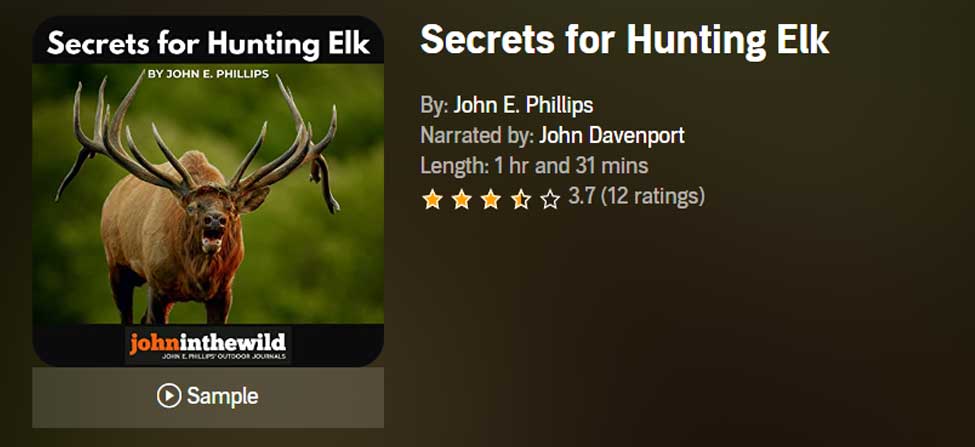
Secrets for Hunting Elk
The quickest, easiest (if there is an easy way), and safest way to find and take that bull elk of a lifetime will be to hunt with a guide.
Chad Schearer, a longtime Montana guide and TV personality, told me, “My hunter is my gun. If I get to the elk, and my hunter isn’t with me, then we don’t take the elk. My job is not only to find the elk but also to help the hunter get to the elk and make the experience as enjoyable as I can for him.” That’s the kind of fella with whom I want to go elk hunting.
An elk hunt can be tough, but it doesn’t have to be so tough that you don’t enjoy it. That’s why this elk hunting book starts with the confessions of an elk guide and with Chad Schearer’s philosophy of what the guide and the hunter’s relationship should be.
A good portion of your success will depend on your physical condition, and Matt Morrett of Harrisburg, Pennsylvania explains how an eastern hunter can get ready physically during June and July to hunt western elk, the animals he describes as, “Like deer or turkeys on steroids.”
Wayne Carlton, well-known elk hunter and TV and video personality from Montrose, Colorado, tells us what types of elk calls to use and what to say to the elk. Mike Miller of Colorado, another elk guide and Mossy Oak video personality, has tactics for the best equipment for bowhunting and gun hunting elk.
You’ll learn helpful strategies and hunting tips in this book, as well as some straightforward hunting methods that will help to make your elk hunt more successful.
“Thanks to the advice in your elk hunting books, I was able to call up a nice 6-point (6X6) bull elk! He was bugling like crazy. I called him in from about a ¼ mile away. Called him into bow range (about 40 yards away). It was a thrill!” ~Rob Brannon
VERSIONS: AUDIBLE & KINDLE
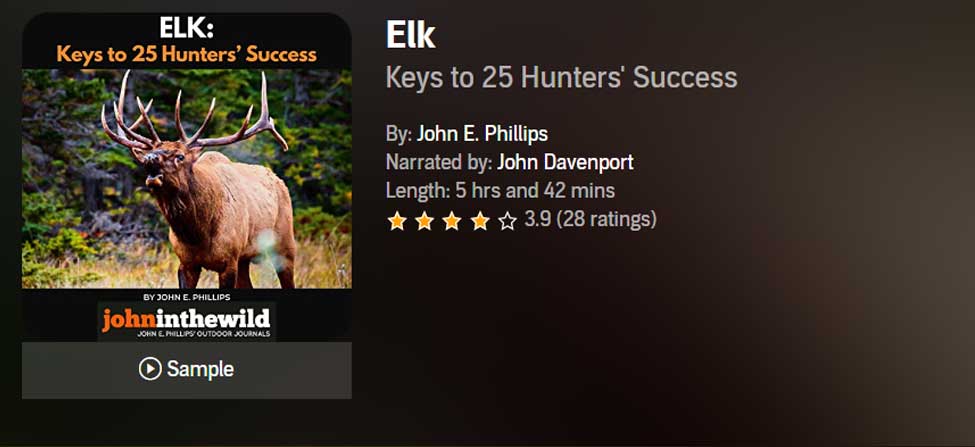
Elk: Keys to 25 Hunters’ Success
Often just one tip or tactic makes the difference in whether you take an elk home to dinner or have to hike back to the truck by yourself. In John E. Phillips’ latest elk book, Elk: Keys to 25 Hunters’ Success, you’ll learn from successful elk hunters the strategies they use to find and take elk.
Many know that the technique that seems to work most often is to hunt where other elk hunters don’t and understand where the elk are before you go on a hunt by studying data from each state, visiting HuntData (see chapter 1), examining maps, and reading postings on elk forums.
This book also tells you how to get ready physically for an elk hunt, including participating in Train to Hunt Competitions, what gear you need to take, how to enjoy a successful do-it-yourself elk hunt, or how to pick the best elk guide for you. You’ll also hear about the X System and the Broken Y System of hunting elk.
Although no one person has all the answers on how to help you find and take your elk, I’m convinced that this book’s outdoors men and women will teach you how to have satisfying elk hunts.
As my friend Karl Badger once told me, “Elk hunting doesn’t get any better than when I ride horses into the high backcountry, see two grizzly bears, hear a pack of wolves howl close to camp all night long, eat plenty of delicious food prepared on a fire and enjoy the company of good friends.”
VERSIONS: AUDIBLE, KINDLE & PRINT
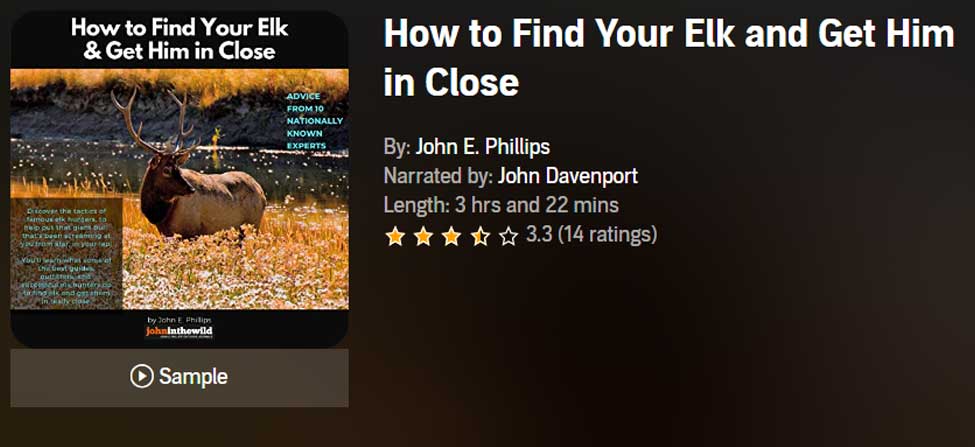
How to Find Your Elk and Get Him in Close will teach you the tactics of 10 nationally known elk hunters, to help put that giant bull that’s been screaming at you from afar, in your lap. You’ll learn what some of the best guides, outfitters, and successful elk hunters do to find elk and get them in really close.
Also in this audiobook, you’ll notice that the majority of the experts call elk to within bow range. We selected numerous bowhunters and bowhunting guides, since the bowhunter has to get much closer to a bull than the gun hunter does – often less than 20 or 30 yards – practically in your lap.
On one elk hunt, I’d heard this bull bugle all morning. My guide had called him within 30 yards, and he was standing just inside black timber. I saw the smoke from his nose wafting out into the icy air less than 30-yards away. All the bull had to do was step out, and I could take the shot with my bow. But then, through no fault of my guide or me, the bull vanished.
The only conclusion I could come up with to understand why the bull I wanted to take with my bow hadn’t stepped out and given me a shot, was because he got raptured. He evidently had left the earth with no trace of himself.
This hunt was when I started wanting to learn more about hunting elk up close. In this book, I’ve tried to find some of the most knowledgeable, experienced, and practical elk hunters. I’ve always found that the best way to learn any outdoor skill, is to either hunt or fish with the best sportsmen in that field.
Often, in elk hunting, that means elk guides, who generally hunt every day of the season and receive a salary for every hunter they guide. So, I’ve put together a group of some of the best elk hunters I know to help us all learn how to find bull elk and get them in close.
VERSIONS: AUDIBLE, KINDLE & PRINT
Tomorrow: More Elk Hunting Strategies

